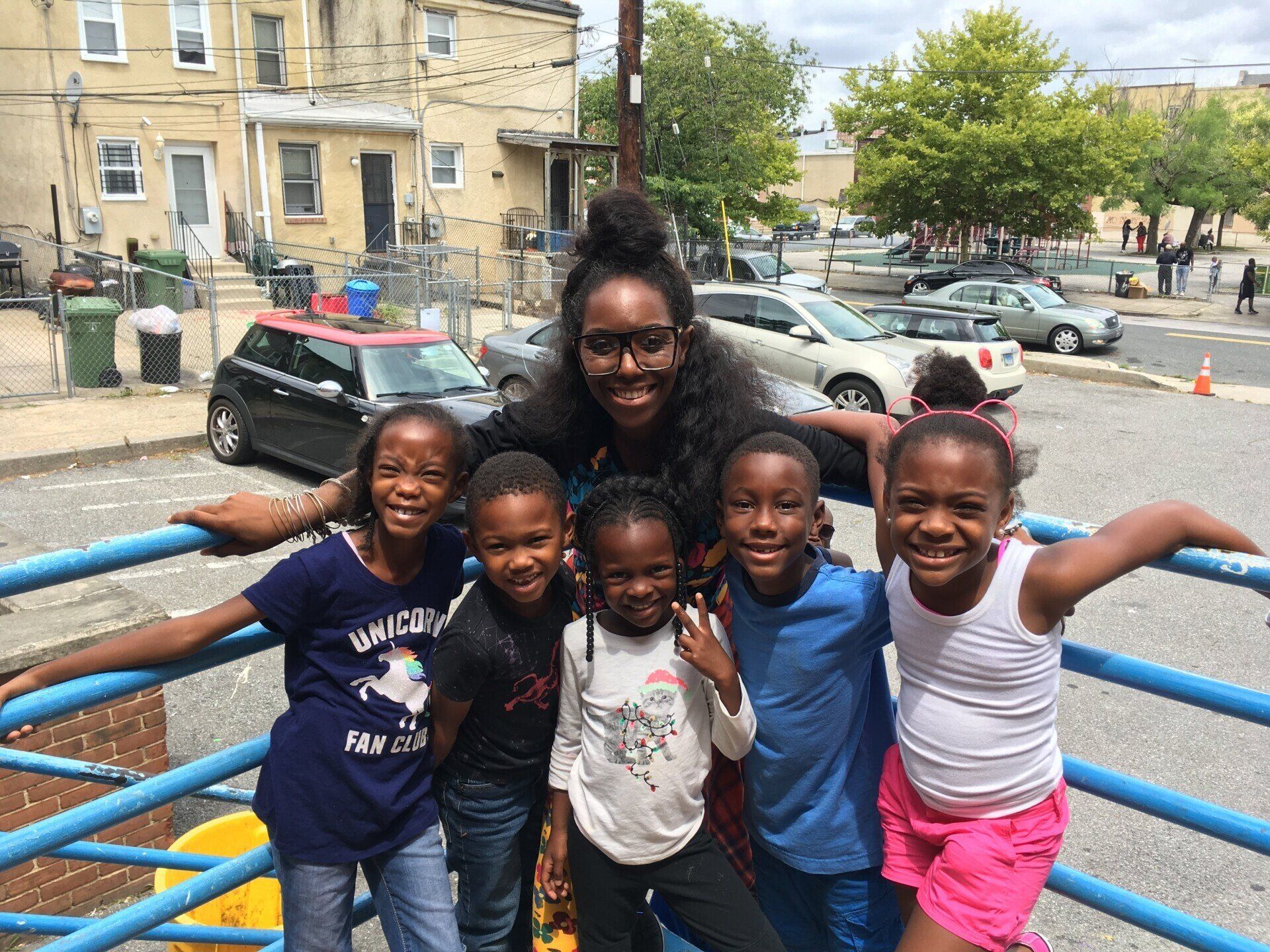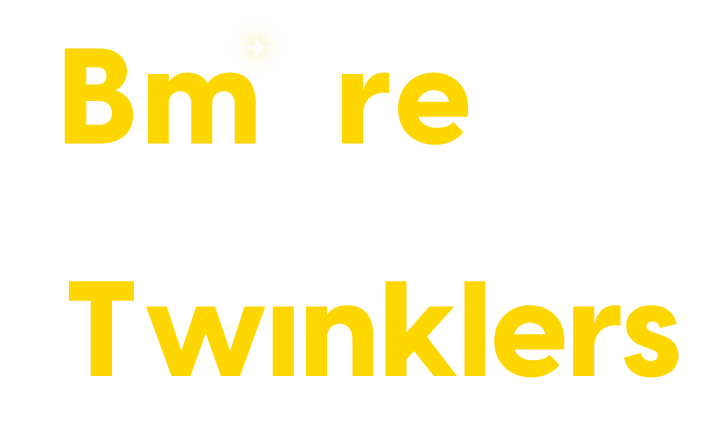Ericka Alston-Buck: Suzuki Kid, accidental activist

Interviewed by Marion Goodrich
Ericka Alston-Buck is the CEO of Penn North Community Resource Center, and the director of The Kids’ Safe Zone. Both are located in a distressed West Baltimore community known as Sandtown-Winchester. A proud Suzuki kid, Alston-Buck calls herself an “accidental activist”. The reason why is rooted in the events of three years ago.
In April of 2015, Alston-Buck was one month into her job as public relations director for Penn North when Baltimore erupted following the death of a Sandtown-Winchester resident, Freddie Gray. Gray had died from severe spinal cord injuries sustained while riding in a police van. The neighborhood was at the center of the turmoil, compounding the lack of resources for its children.
Within 5 weeks, Alston-Buck conceived of and brought into being The Kids’ Safe Zone. Its first day, 40 children came. By the next week, that number quadrupled. Now, over 100 children ages 5 to 17 come to the Safe Zone to do what most children can do at home: Feel safe, and be a kid.
The following interview has been edited for space and clarity.
“Teaching music is not my main purpose. I want to make good citizens.”
- Shinichi Suzuki
When we were introduced to each other, the first thing you let me know about yourself is that you are a Suzuki kid.
Yes, and how cool is that?
What was being a Suzuki kid like for you?
I was a typical kid that I now serve at The Kids’ Safe Zone. I grew up in a household with a smart single mom, who used her Section 8 voucher to move us to a neighborhood with good schools. Our school was culturally aware; we visited all of the city’s major performance halls. What impressed me the most was seeing black violinists. I remember thinking: “Wow, we can do that!”
Mom not only made sure we were signed up for everything, but supported and encouraged us. When I was in 3rd grade, she signed me up for a school-sponsored Suzuki program, and I brought home a violin. Mom encouraged my practicing throughout the house, at all times! At 46 years old, I still remember my attachment to Long, Long Ago, and making up lyrics while listening to it. That made it real to me.
What did you like best about your experience?
Time with my teacher, being with my violin and the music. Any time I was there, I didn’t have to deal with the wolves. And there were a lot [of wolves]. The most important thing was being able to escape, letting the music take me anywhere. It’s the reason why I encourage music and reading at The Kids’ Safe Zone. For kids that are in turmoil, these are ways to escape.
What did you like the least?
You know, I liked everything about it.
What did it provide you, viewing from your perspective now?
Through doing it and loving it, I now understand as an adult: Give things a chance. It gave me the opportunity to be fearless and to learn something different. Now that I’m thinking about it, there are actually a lot of skills involved that you can take with you into adulthood!
“If you think of something, do it.”
“Action cannot be separated from thought.”
- Shinichi Suzuki
How did Kids’ Safe Zone come into being? Is there a dominant thought or impression that served to galvanize you into creating it?
During the uprising, everyone kept hearing that there were limited resources for children in this huge community of 72 blocks. And it was true. What’s also true is at first, I sat back thinking: ‘It’s unbelievable that these kids don’t have an outlet; someone should do something’. It took
a while, but eventually…‘Oh, I’m the one who should be doing something!’ I approached my director, who handed me the key to a vacant laundromat. Standing in the middle of that empty place, I let go of the notion ‘we’ meant ‘everyone else’.
What public relations directors do is write press releases. I went to my desk and wrote a press release: Penn-North is going to open a ‘Kids’ Safe Zone’ on June 1. We will have organized sports, arts, field trips, swimming, a crafts center, a tech center, a computer lab… just typing away about what this place that didn’t exist yet was going to have. In five weeks, ‘The Kids’ Safe Zone’ will be here for any child between the ages of 5 and 17, 7 days a week, 8am to 8pm, and we will have all of the cool stuff. This went to all local TV stations and The Baltimore Sun.
I rolled my chair back from the desk and said to myself: ‘Hm. I guess you’ve got to make that happen.’ So, social media: ‘Hey! We need paint, carpet, computers, games, your time, your talent!’ People started showing up, and they still show up; we’re powered by volunteers and donations. And every day, 100 kids still come here. Yes, there is yelling, kicking, and screaming. It’s also the place where you’ll get the most hugs ever. There’s a beautiful something in the chaos. Instead of a ‘facility’ or ‘institution’ we’ve created the coolest house on the block.
“Create the best possible environment.”
- Shinichi Suzuki
It’s been three eventful years. As their Safe Zone director, what is, in your opinion, most essential for these children?
Because this program was born in the era of “Black Lives Matter” it was very important not to have it reduced to a hashtag or t-shirt. We wanted a place where they could feel safe, nurtured and encouraged. The Kids’ Safe Zone offers a choice to adapt to that better environment, versus the violence and turmoil out there. My goal here is to cultivate their value. I want every child to know they’re worthy. I need them to know they deserve whatever good thing they envision, or dream, or feel, regardless of Mom’s tax bracket or zip code. And these kids are having experiences here that encourage them to think: ‘I am worthy, and can receive these good things.’ That’s why we’re here.
You have said you want The Kids’ Safe Zone to be a normal, everyday thing for neighborhood children. What is a typical day here like?
A typical day here is like a typical day for any mom: Controlled chaos. In the summer, we open at 8am. And if you get here at 8:05, there are children standing outside, telling you you’re late. At the top of the morning schedule is ‘Mindful Moments’, with deep breathing exercises. Our day starts out very calm intentionally because we don’t know what our children deal with at home. Later in the morning, we have group reading time; everyone is also encouraged to read on their own throughout the day.
We’re in a food desert, and the kids’ diets reflect that. So, we feed them healthy food when they’re here, and keep them moving. I fought tooth and nail to get the basketball court and playground across the street refurbished; we’re out on them all the time. In the summer, our
kids go swimming at the local pool. We do yoga every day. Any kid here from 5 years old up can conduct a full yoga class…that is awesome to watch! Indoors, we have a “Just Dance” area. We have group game time, which helps cultivate the family setting and ‘cool house’ vibe.
What you won’t see is a big sister having to be a big sister. I want to make sure we’ve created an environment where a kid can just be a kid. I don’t care if you have to cook dinner for your younger siblings when you get home; here, you get to be 12 years old. We intentionally separate group activities by age range, to interrupt the 5 and 6 year olds’ habit of going to big brother or sister for everything.
We do see unacceptable behavior, so there’s time out. Time-outs look like reading nooks. They have to read a book, and then they have to tell me or another staff member what the book was about (it’s ok if they just look at the pictures). Afterwards, they’ll be re-directed, because we understand kids do what they see.
Every child has an “I’m So Awesome” check-off list, where our seven staff members tell each child something cool they’ve noticed about them. Every child also has to get seven hugs. Kids come to my office door and just look at me. I’ll ask: ‘What do you want?’ and they’ll say: ‘Can I have a hug?’ They’re checking off their hugs.
I recently had surgery and yesterday was my first day back. I got a little of it all: Crying, complaining, resistance. But, going back again to my experience in a Suzuki program, I encourage every child to just give it a chance. Maybe when they’re 20 years old, they’ll think: ‘I remember at The Kids’ Safe Zone, Mrs. Ericka made me jump on a pogo stick. I didn’t want to, but I found out it was pretty cool in the end’.
What here gives you the most satisfaction?
I am most satisfied with two things: First, knowing that from the time I get here to the time I leave, 100 kids are safe. Second, watching our murder rate climb without having to go to a funeral or a crime scene. Our reality is, 200 people die from violence here every year. A lot of them are from this neighborhood.
What would you like to change, or modify?
There would be no need for a Kid’s Safe Zone, because kids would be safe everywhere
Any final thoughts?
This wasn’t intentional. I never set out to do this. But now, there’s nothing else in the world I see myself doing.
VISIT
- Online remotely
- In-person (location revealed after booking)
CONTACT
All Rights Reserved | B More Twinklers | Website Design By HVD Studios, LLC


